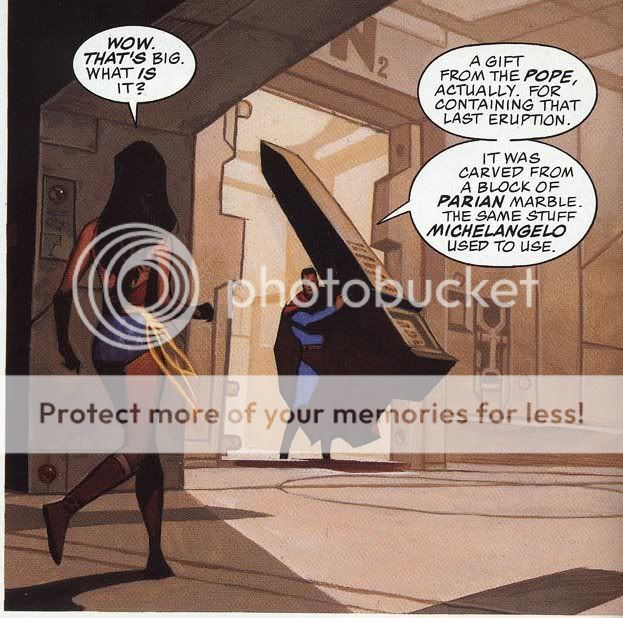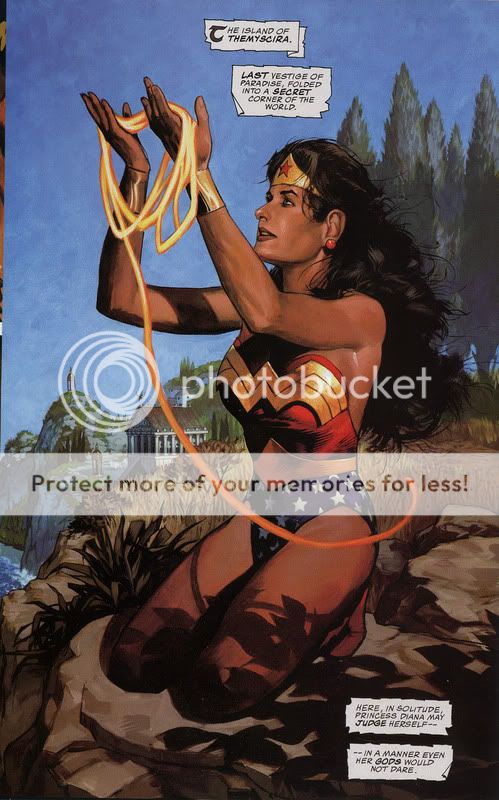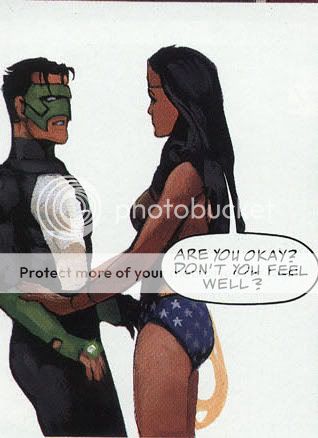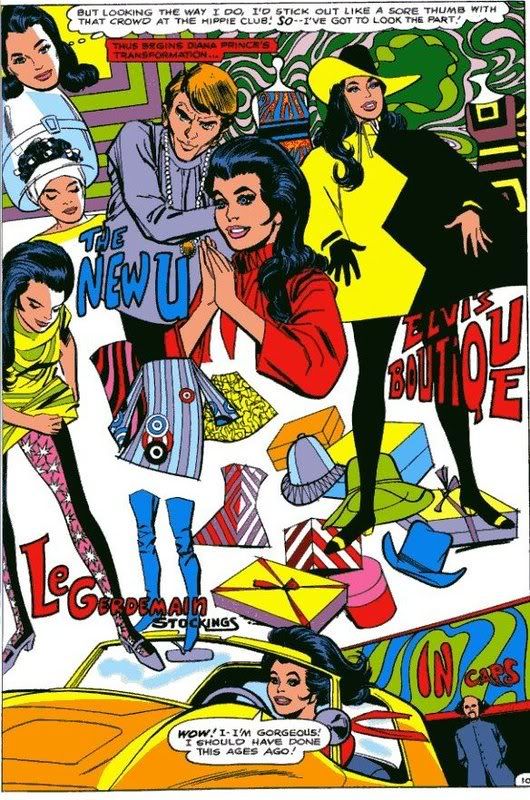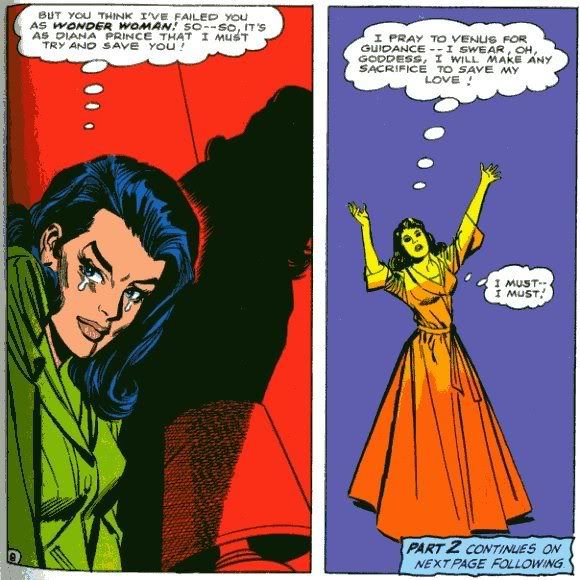This is my fourth post on Wonder Woman this week; for the earlier ones see one, two, three.
_______________________
Way back when I was bright-eyed, bushy-tailed, and not filled to my ears with congealed bile, bitterness, and general cantankeousness, George Perez was pretty much my favorite comics artist. As a result, I bought the first couple years of his late eighties Wonder Woman reboot.
Time passed, and with all the filling up with bile and what-not…well, anyway, I haven’t read or much thought of either George Perez or his run on Wonder Woman in a long, long time. But since I was writing about Wonder Woman, I thought I’d disentomb the back issues from the fossilized long boxes, redistributing large piles of lint and small piles of cats.
So, now that I’ve reread these things for the first time in at least a decade, what’s the verdict?
First, and somewhat inevitably, I have to admit that Perez is no longer one of my favorite artists. Not that I think he’s bad, by any means. He’s obviously quite technically gifted, and he has an especial gift for faces. I actually remembered the sequence below, where Diana first does her bullets and bracelets thing, and I still think it’s pretty great, with a lot of the expressive charm that I appreciate in good shojo:
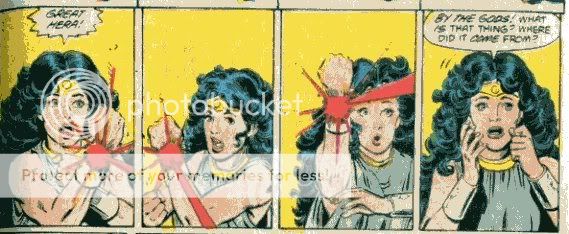
As is evident even in that little sequence above, Perez draws women with real sensuality and grace. His layouts are interesting and varied too. He’s a good artist; when his stuff is put in front of me, I like looking at it, which puts him head and shoulder, and, hell, waist above the vast majority of mainstream artists working today. But… compared to super-hero artists who really thrill me, like Jim Aparo or Nick Cardy or Neal Adams, or, for that matter, Mike Sekowsky in his WW run, or Harry Peter, Perez seems — well, kind of bland, I guess. His drawing is good, but not great; and his design sense always seems more utilitarian than inspired. For example, look at his wraparound cover for the first issue of WW.

This is supposed to be a tour de’force; lots of stuff happening, the whole issue shown in a single two page image. But basically it just sort of falls into a layout no-man’s land — not supremely detailed enough to be ravishing, not decisive enough in its use of space to be striking. There’s nothing wrong with any individual piece of it, or with the overall effect, even, but there’s nothing about it that makes me look at it and say “holy shit!”
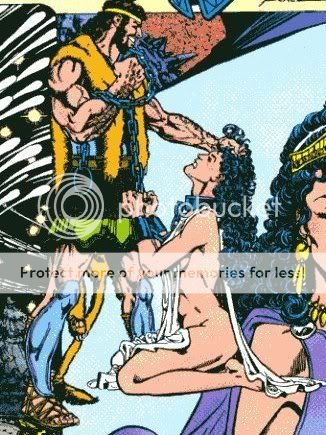
Look, for example, at the (barely there) drapery on the mostly-nude Hippolyta kneeling before hercules on the left side of page. That cloth should cling and curve to her body…but it doesn’t. It just kind of sits there. Again, there’s nothing wrong with it, it’s not bad…it’s just not great.
All right, now that I’ve won that argument with my 17-year-old-self….
I’d actually remembered the first issue story as being pretty good…and it is pretty good. Not great, but pretty good. Greg Potter’s dialogue is overcarbonated in the mighty Marvel manner, but without the nudgy jocosity that made Stan Lee’s scripts tolerable (random selection: “But even into Paradise there can one day come a serpent!” groan. Still, you can see that Perez and Potter brought a lot of love and a lot of thought to the character. In particular, Perez and Potter went to town on the mythological background. There is, of course, lots of name-dropping deities and showing off erudition (Ares and Aphrodite are married! Isn’t that cool!) But there’s also several moments when all their reading actually allows them to approximate the tone and some of the power of actual myth. The sequence where Hippolyta and the Amazons are betrayed and raped by Hercules and his men has a brutal, tragic inevitability — a sense of smart, noble people entwined in betrayal and bloodshed by their own weaknesses. Similarly, Wonder Woman’s creation is both strange and poetic. The Amazons in this telling are the souls of women who were murdered by men, reincarnated by the Gods. Hippolyta (presumably the spirit of the cave-woman with whom the comic opens, though, in a very nice touch, this is never spelled out) was pregnant when she was murdered by her husband, and Diana is that unborn child’s spirit, infused into a body of clay that Hippolyta molds by the sea. It sounds complicated and kind of goofy I guess, but it’s done quietly and it’s really moving — as is the excitement of the immortal Amazons at the chance they now all have to help raise a child. ( Actually, this is somethng I probably appreciated less when I first read the book. I didn’t have a kid of my own then.)
Overall, then, I would say that this was easily the best take on Wonder Woman after Moulton. I would say that except for one thing. Wonder Woman isn’t in the comic. The story is all about Hippolyta and the Amazons. Diana shows up in the last pages, but she doesn’t become Wonder Woman till the last page. And, alas, that last page is ridiculous. That swimsuit with the pneumatic bustier and the star-spangled bottoms…all the mythological verisimilitude Potter and Perez have put so much effort into is just sacrificed on the altar of an old dead guy’s anachronistic fetish-wear.
And that’s kind of it. The rest of the series never really recovers from the fact that it has to focus on Diana. Sure, Potter and Perez do what they can to salvage the situation. They ditch the invisible plane, for example; this Wonder Woman can just fly under her own power. And they do their best to untangle the Steve Trevor/Diana Prince mess. In canon, WW pretty much becmae Diana Prince in order to attract Steve/not intimidate him; she was slumming for love. This is obviously fairly icky and not especially empowering — especially as Steve has over the years vacillated between being a rank fool and a manipulative asshole.
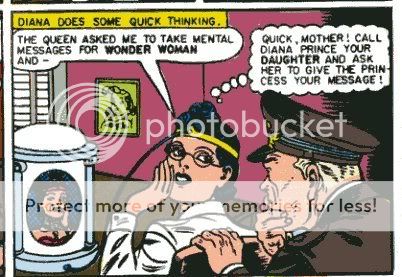
Steve Trevor, Fool; by Moulton and Harry Peter

Steve Trevor, Dick, by Robert Kanigher and Ross Andru
So, anyway, Potter and Perez just got rid of the Diana Prince identity altogether, and relegated Trevor to being an older uncle figure. Indeed, in the series itself, Diana has, through the whole first two years, exactly zero (0) romantic interests. (I think she had an abortive date with Superman in John Byrne’s miniseries at this time. Some ideas are so obvious they’re brilliant. And then, some ideas are so obvious they’re just fucking stupid. The Superman/Wonder Woman pairing is one of the latter (now Wonder Woman/Martian Manhunter on the other hand…or Wonder Woman/Black Canary….))
Where was I? Oh, right. Perez and Potter tried to rejigger the character to make her less ridiculous. And they had some success. The supporting cast, in particular — which is almost entirely female — is interesting and vared; there’s a scholar of ancient Greece, her daughter, a publicist, Steve Trevor, a (much-much-revised) Etta Candy; they all are fairly interesting and personable. I wouldn’t mind just reading about them and what they’re up to and how they related to Diana, how she adjust to living in a new world — stuff like that.
But, alas, we’re in a super-hero comic. And that means there have to be villains and super-battles and high-minded diatribes and everything bigger than life. And, man, it’s stupid. By the third comic or so, the whole — oh, no, I’ve been defeated, what shall I do, wait I’ll use my magic lasso! — has already become an over-used cliche. And when she’s not suddenly remembering how to use her main fucking weapon, Diana’s always thinking deep thoughts like “how strange these mortals are! I have much to learn from their courage and beauty!” Or some such. She’s the Silver Surfer, only with (slightly) more clothes.
Part of the problem is just mid-level super-hero storytelling, and a desperate dearth of interesting bad guys — Ares, the main villian of villains, just gives up when he realizes that his plan to destroy the earth will…cause the destruction of the earth. Part of the problem, though, is though they’ve fiddled with the character, they’re still saddled with Moulton’s creation. And while they avoid (at least for the most part) the bondage, they are stuck with some of his other preconceptions
The core of Perez’s story (scripted after the first few issues, and somewhat unfortunately, by Len Wein) is Diana’s mission as an emissary from Paradise Island, bringing alien knowledge, educating man’s world. But this mission is completely incoherent. What does Diana have to teach? If it’s peace, she should probably stop hitting people. If it’s how to be a strong woman…isn’t that a little condescending? Especially since she’s being written by men? Who keep drawing her in a one-piece? (Perhaps the message is that boned corsettes can do wonders.)
Basically, the problem with the series is that it wants to be an adventure series and it wants to have a message. But Moulton’s message (women are strong…because they are tied up!) won’t do — and yet they can’t quite abandon it either. So the series wanders on, mostly as a pro-forma super-hero book, but with half-digested pretensions. It can’t loosen up enough to be goofy, but it can’t spit out any words of wisdom which make sense. The series certainly has some nice moments — the sad death of Mindi Mayer, reprinted in the Greatest Wonder Woman stories, is touching. But it’s also really irritating; in a story about a woman’s sad suicide and about (presumably) female relationships, why is the narration in the head of a male detective drooling over Diana’s charms? For the most part, though, the stories aren’t either touching or irritating; they’re just tedious. I can’t believe I got this for two whole years. This time through, I couldn’t hack that many. I made it through ten, and that’s all. Back to the longbox for you, WW.
Update: All right, several folks in comments have goaded me to try Greg Rucka’s run…so I’ll give that a shot and report back…maybe next week? We’ll see how the schedule is….
Update 2: …and fixed embarrassing naming error. Duh.
Update 3: And part 5.

